Corgis are quite a famous dog breed. There is evidence that suggests that they are one of the first dogs to arrive on the British islands (3000 years ago). And let’s mention the fact that they are Royal dogs since Queen Elishabet II has a pack of them!
But if you don’t come from the British islands, there is a whole different list of things you should know about these wonderful dogs. First of all, they are adorable! They have funny little legs, long bodies that end in a butt that walks around like it owns the place. Another thing that we can’t leave off this list is their coats!
The Corgi is a double-coated dog that is famous for its soft and colorful hair. Speaking of color, we have to mention the different styles Corgis come in. You probably heard of the Pembroke Corgi. That’s the most famous one and probably what you think of when you think about the dog in general.
Then there is the Cardigan. Cardigans are the original Corgis. They can have darker coats with more variants in color than the Pembroke. But did you know that there is another? And believe it or not, it’s fluffier!
Yes, the Fluffy Corgi is a real thing, and we are absolutely in love with it! So what is this hairy creature, and how is it different from the other Corgis? Well, that’s what we plan to find out, so stick with us, and we’ll figure out this cute fluffy mystery.
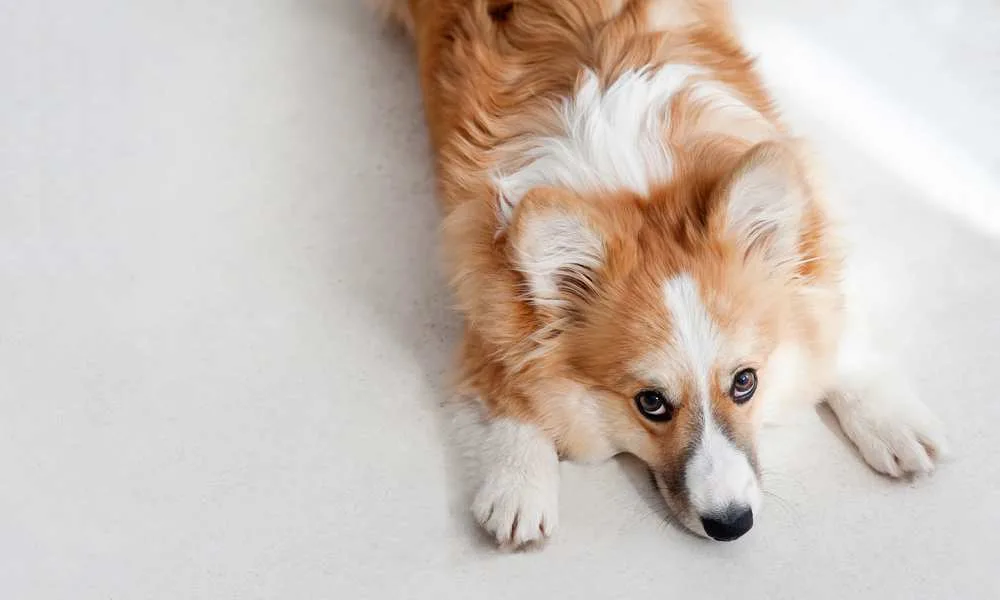
What Is A Fluffy Corgi?
The Fluffy is kind of a special edition of the Corgi. Let us explain.
Fluffy Corgis are part of the Corgi family. Not only that – any Corgi can be born as a “Fluffy.” The breed is already famous for its double coat and general fluffiness. So you can imagine how great it must be when one is born with even more hair.
There is a reason for them being born like this, and it’s not just the luck of the draw. A Corgis fluffiness is based on the genes that their parents carried. Now, this doesn’t mean that the puppies have to be a Fluffy Corgi like their parents were. Sure, if the puppy got its fluffy gene from saying its mother – then there is a good chance of her having a stronger coat with more hair.
But having more hair doesn’t qualify a Corgi to be named a Fluffy. There’s always a chance that the gene won’t work in the little baby Corgi. If this happens then it is just a carrier of the gene. Maybe it will have a baby fluffy one day, who knows?
The gene usually takes about two to three weeks to start doing its thing, so you can’t tell from the get-go if you have a Fluffy on your hands or not.
So what are the rules here? What makes a Corgi a true Fluffy?
Well, there are several rules. A fluffy Corgi has long hair on its topcoat while having a weaker than usual undercoat. While this does sound like it’s a small difference, there is a good reason for them being like this.
This Fluffines comes from a genetic mutation that is caused by the FGF5 gene. The proper name for this gene, as far as we’re concerned, is the fluffy gene! But we’ll get back to this in a minute.
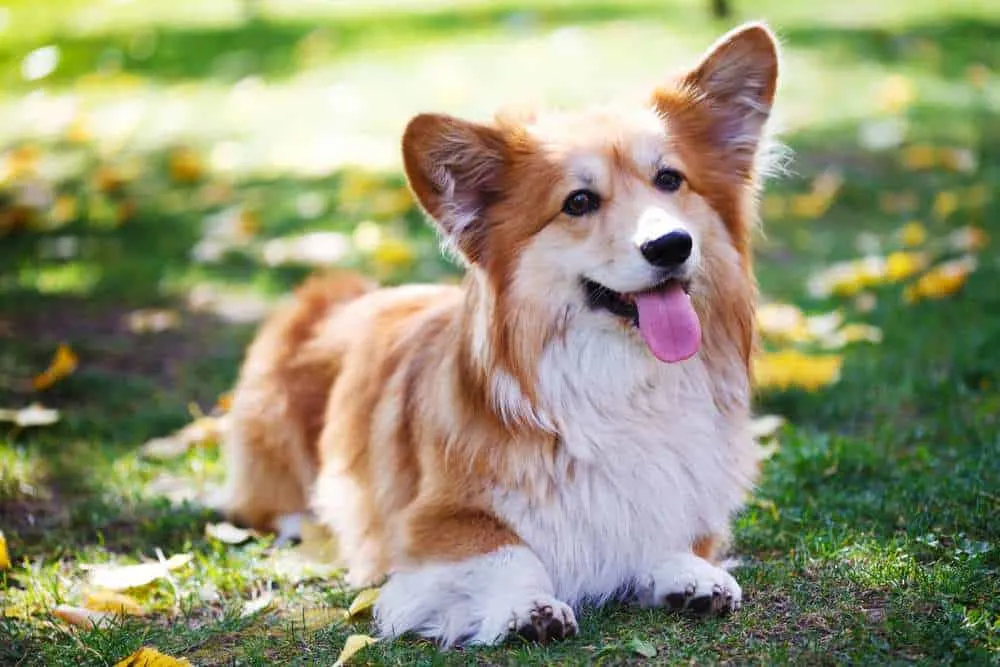
The “Fluffy” Is Not Recognised As A Breed
We mentioned in the beginning how there are two different versions of the Corgi. The Pembroke and the Cardigan. Now the reason that the Fluffy Corgi is not included on these lists lies in the fact that it is not recognized as a breed by any Kennel club or institution. It’s sad, we know. See, the gene that causes all this fluffiness is usually found in spitz breeds.
What the heck is a Spitz breed and why does it matter?
Let us explain:
Spitz breed dogs are a specific group of dogs that are all closely related to a shared ancestor. They are wolf-like creatures, with pointy ears and almond-shaped eyes and they come in all shapes and sizes. Another shared trait is their warm and rugged double coats. Breeds that belong to this group are, for instance: the Keeshond, the Samoyed, the Chow Chow, the Swedish Vallhund, and the Norwegian Elkhound. Corgis are not on this list, but they do share some traits with all of these puppies!
The Corgi has pointy ears, the eyes, and the sometimes long double coats. But, at some point in time, the Corgis genes altered enough for it to not share all the traits necessary to be a Spitz Breed. For this reason, the Fluffy Corgi does not belong to the Spitz club, but is now its own little creature with a couple of versions under the belt. That’s not a bad record by any means.
But with all that said, the Fluffy Corgi unfortunately doesn’t fall into the Spitz club or the Corgi club. Even showrooms don’t want to recognize them as a breed!
Well, if it means anything, we accept them! And some Fluffy Corgi breeders are focused exclusively on making them more common.
This does make some people angry though, because the fluffy gene, when active, is considered a fault by some experts. They have some good reasons to think that, don’t worry. We’ll explain in a minute. But let’s get this all straight so we can carry on.
What Is A Fluffy Corgi?
Well, the simple answer would be that it’s a Corgi, but fluffier. Personally, we don’t mind that answer. It’s not enough for the dog world to accept them, and that’s fine. But we think that they’re worth mentioning at least!
But let’s get into the matter of this gene that the Corgi sometimes has? And how come it’s not as common in our favorite breed?
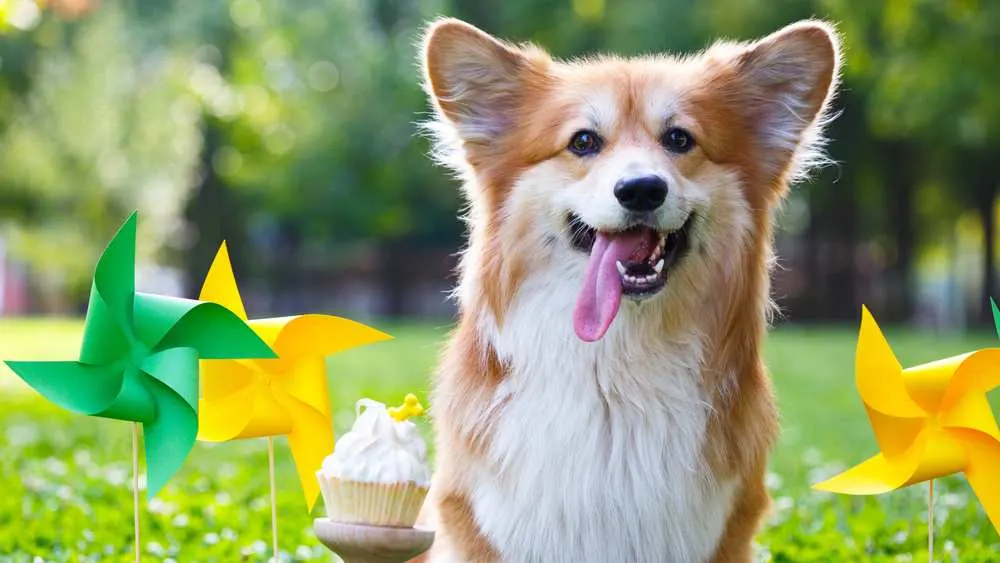
The Fluffy Gene
We mentioned already that there is this “fluffy gene” that makes Corgis coats grow longer and fuller. But what is it exactly? How does it work?
To figure this out, we need to learn a thing or two about genes. Don’t worry, though; we won’t start going into biology class mode. We just need to explain a couple of things about these interesting chemicals that pretty much determine what your dog looks like, how he behaves, and pretty much everything else about him!
Your dog’s body pretty much operates with the help of genes.
Genes are one of the integral parts of their DNA, and in these parts is all the information that cells need to work. Genes are the boss, and the body works and does what they tell it.
Your dog’s body works like this, and so does yours.
Now you probably heard that, for instance, humans having blue eyes is statistically almost impossible. Dogs having blue eyes is a bit more common, but it’s still rare. Both of your parents need to have blue eyes for you to continue the tradition. For instance, if your father has brown eyes, but your mother has blue eyes, the chances plummet. It’s just a weak gene.
Heck dogs with blue eyes, Corgis especially, have similar low chances of getting them. Take a look at the Blue Merle Corgi as an example. They have blue eyes because of the Merle Gene. It’s always those darn genes!
How much hair you have and if you’ll go bald is also up to your parents genes. Well, your Corgi depends on its genes for everything too.
The fluffy gene, as we like to call it, is a gene that has somehow survived in the Corgi breed. We use the word to survive because your Corgi doesn’t really need it. It is a gene passed on from some of Corgis’ ancestors that just needed to stay warm in harsh winter environments that they were living in at the time. Well, it wasn’t this exact gene, but more on that in a second.
Don’t get us wrong, the hills of Wales on which Corgis have worked for thousands of years are not really covered in warm sunshine and palm trees. The Corgi still has quite a heavy double-coat on its body that can protect it from most of the weather problems that it was facing throughout the last 3000 years.
Still, the genes survived. The odds were against them, but they did. But what exactly is the fluffy gene? Scientifically speaking.
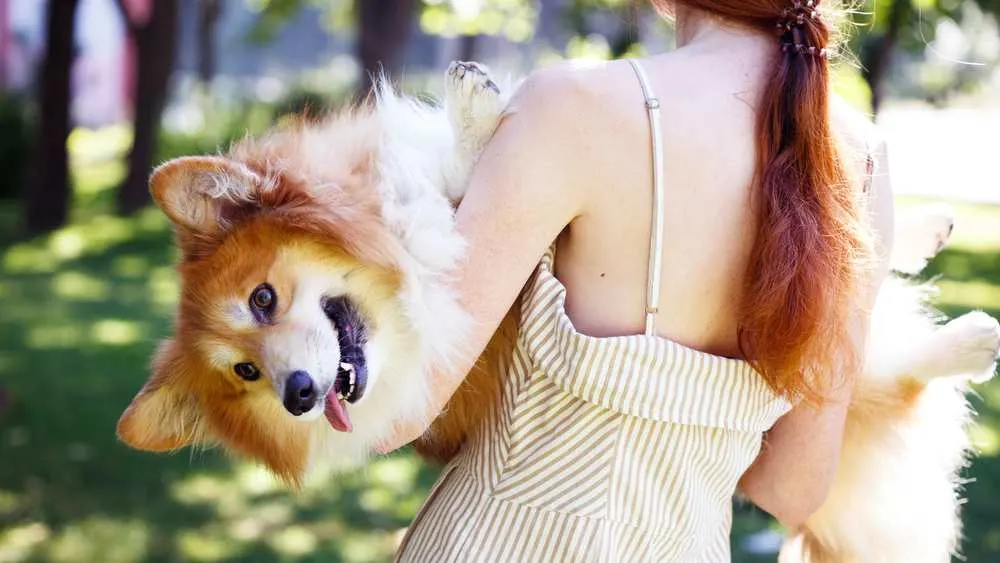
The FGF5 Gene
The FGF5 is, at first glance, a wonderful gene. We already mentioned that it comes from the Spitz Breed, and the Corgi might come from this breed too!
FGF5 is an autosomal recessive gene. It is a mutated version of the gene that our puppies ancestors used to get those warm coats they needed for winter.
The only other breed with the same FGF5 gene, apart from the Corgi, is the Swedish Vallhund. The thing is that even though the coats that this gene produces look splendid, they may not be very useful.
The Vallhund is a working breed, just like the Corgi. They work in even harsher environments, though, which means that they are a double-coated breed. Their fur is much more challenging than the Corgis, and it keeps them very warm, dry, and safe.
The FGF5 gene can mess up that famous coat. Fluffy Vallhunds are still double-coated dogs, but the undercoat is much smaller and doesn’t keep them warm.
You can imagine it like this: the undercoat of these breeds needs to be dense and warm, while the topcoat needs to keep them dry and protect them from wind and other predators. Well, the FGF5 gene is a confused one. It makes the hairs on the undercoat weak and not as dense. While all the work goes to the topcoat, making it unnecessarily long but not very thick.
The gene is considered a serious fault in the Swedish Vallhund, but the percentage of affected dogs is low. It’s simple; the Vallhund is still a working dog that needs that dense and healthy double coat.
The Corgi, on the other hand, is not such a common worker anymore. So even though the gene is considered a fault, it is not a serious cause of worry. So how does the gene end up in your Corgi, and why are there so few of them.
Well, for the FGF5 gene to get transferred to the puppy, both parents need to have it. Sometimes the parents are just carriers – this means that the gene won’t affect them, but their kids will get it. In these cases, the parent’s coats are a bit longer; the gene is present after all. But it’s sometimes such a small difference that it’s hardly noticeable.
Even when both parents are Fluffy Corgis, there is only a 25% chance of their kids getting the gene. Usually, there will only be one or two Fluffies in the litter. For this reason, the gene is not considered a serious fault.
But you can imagine that a Fluffy Corgi could have quite a difficult time working in its home country of Wales. The long but weak coat would get soaked in the rain very quickly, and then the harsh winds would do what they do to the poor unprotected Corgi.
But if your Fluffy Corgis are staying inside and you have moderate weather conditions outside, they will be just fine. More than fine once the summer comes around, considering that the Fluffy coat isn’t that heavy.
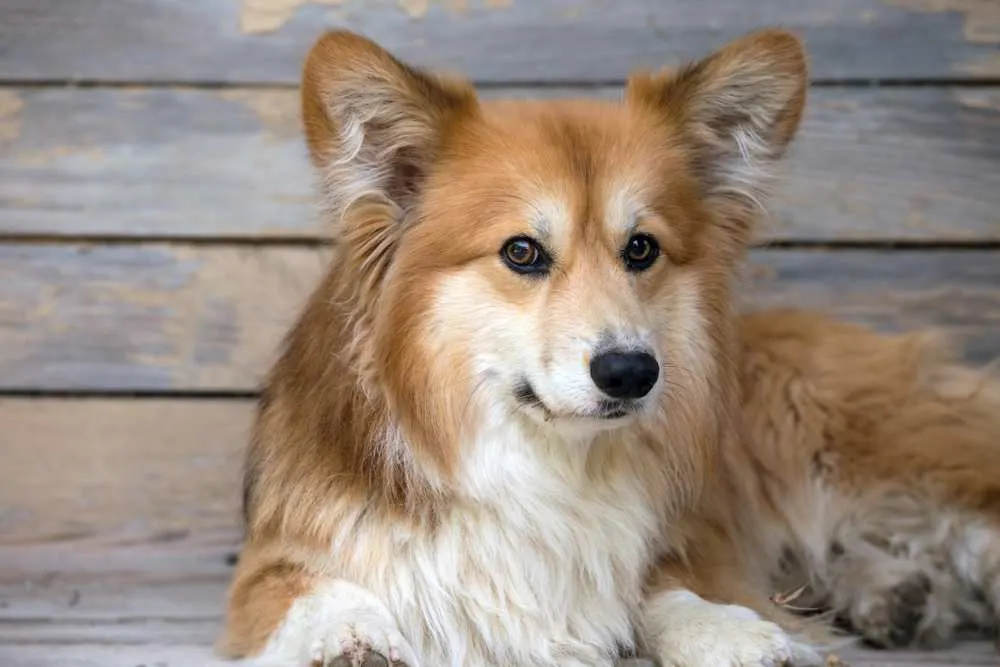
Is There A Difference Between The Corgis?
Regular Corgis and Fluffy Corgis are the same breeds. We like them, and we do wish they were recognized – but being part of the Corgi family isn’t that bad, to be honest!
The Fluffy Gene can’t do much more than affecting the coat. They’re all Corgis, just with different fashion styles. With that said, the different coats mean that you could think about getting a Fluffy if you live in a country with a warmer climate. The shedding is also something to consider.
Shedding
Corgis shed. And they shed a lot.
The fact that the Fluffy Corgi seems to have more fur may lead some to believe that it sheds even more than its regular coated family members.
But if you’ve been paying attention, you probably figured out that a Fluffy coat doesn’t mean a denser coat. The Fluffy Corgis do actually shed less, and they have an easier time living in warmer climates because of this.
With that said, they do still shed like crazy. The regular Corgi will just shed more because it needs to lose a lot more hair to keep cool during the summertime. So getting a Fluffy in a warmer country makes sense, but you will still have all of the grooming duties that come with owning a Corgi.
Brushing them once a day, bathing them once every two months, and collecting their hair from every spot in your house is still part of the journey.
Read More: Do corgis have dander? Do corgis cause allergies in humans?
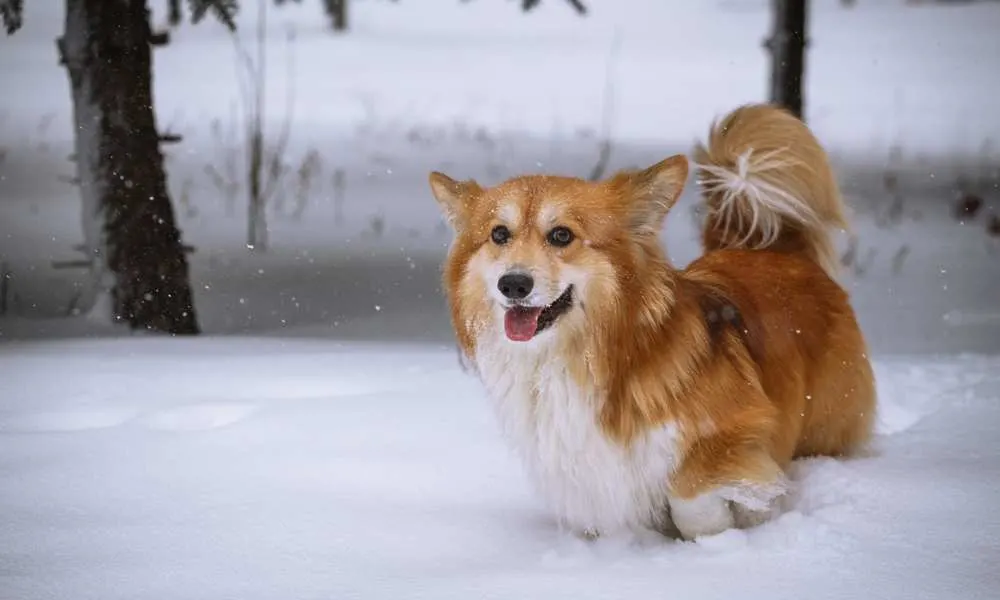
Final Words
We hope that we gave you all the info you needed if you wondered what kind of Corgi to get.
This is just one factor though; Corgis also come with a rich color spectrum to choose from. The fluffy factor is important for weather and looks, but not much else. If you already have a Fluffy in the house, we hope you now know what they are and how they came about having that beautiful coat on them.
No matter what Corgi you have, they are an excellent and loyal family companion. You can’t really make a wrong decision here. We recommend all Corgis! Just remember to love them as much as they love you, and you’ll have a happy little companion by your side for a long, long time.
Read Also: How Long Does It Take For Corgi Hair To Grow Back?

